Microsoft Announces Windows 8.1 Update - Desktop as a First Class Citizen
by Brett Howse on April 3, 2014 9:00 AM EST- Posted in
- Software
- Operating Systems
- Microsoft
- Windows 8
- BUILD
- Windows 8.1
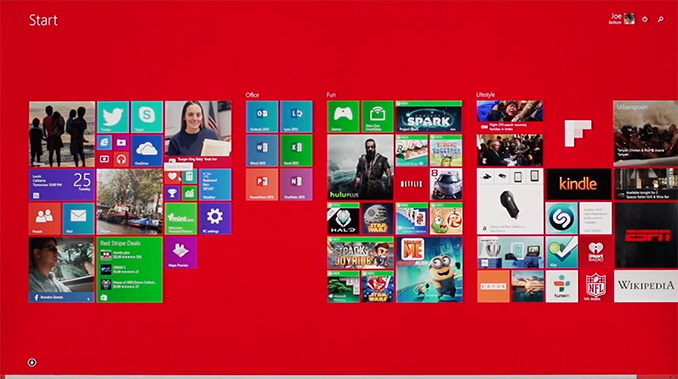
Microsoft’s day 1 keynote for the BUILD developer conference detailed an update to Windows coming on the next scheduled patch Tuesday called 8.1 Update. Notice it’s not called Update 1, which means there may or may not be more of these updates later in the year. Hopefully there’s more.
Windows 8 launched about 18 months ago. With that launch, Windows was put on a rapid release cycle, which resulted in Windows 8.1 a mere 12 months later. When Windows 8 launched, “touch first” was the talking point used during the reveal. Windows 8 was likely the biggest ever change to Windows, and was a pretty big gamble on Microsoft’s part. For the project head of Windows 8, it didn’t work out with Steven Sinofsky leaving the company only a couple of weeks after the launch event. As a product launch, it certainly didn’t halt the decline in PC sales that were already beginning.
Much has been said of Windows 8 since its launch, some of it good, some of it bad. Most of the bad focused on how Microsoft forced a touch interface and mobile app system onto a market that was, especially at the time, dominated by non-touch PCs and devices. A lot of the criticism was valid, and was likely exaggerated due to there being no way to re-enable any legacy mode. In the history of Windows, there has always been a way to go back to the old version’s look and feel, but keep the new functionality. In the case of Windows 8, this didn’t happen, and many people don’t appreciate that.
To add extra fuel to the fire, even the touch first interface (called Modern by this point) wasn’t finished. Many settings and functionality could only be accessed by the desktop control panel which was decidedly non-touch. Even though Windows 8 was actually quite a good touch based operating system, it wasn’t finished. The design decisions of the touch based system were all based on edge gestures, but there were no obvious way to know that.
Windows 8.1 addressed a lot of the complaints. The Start Button was back – even if its functionality was not the same. The Start button could be configured to launch into the All Apps mode rather than the Start Screen of Windows 8. You could choose to boot directly to the desktop. And on the touch side, some of the gestures were changed, and many more of the PC settings could be configured from the Modern interface. As a bonus (or not – depending on who you are) everything was synced with SkyDrive, and SkyDrive was installed on both x86 and ARM versions for file sync with the cloud. The built in apps were much better, the store was overhauled, and more people were happy.
If Windows 8 was touch first, then 8.1 Update is most definitely keyboard/mouse first. Almost every single feature added in the Update is geared towards making the Desktop environment a first class citizen again, and it’s wonderful – and I say that as someone who uses and enjoys Windows 8 and 8.1 every day.
Traditional PCs – desktops and laptops – will now boot to the desktop by default. PC makers building tablets or types of hybrid machines with touchscreens can now set a flag to identify the device as a Slate, which will make them boot to the Start Screen. The Modern interface is now aware of how it’s being used. If you are using touch, it acts just like 8.1, but if you are using a keyboard and mouse, there are now context boxes on the right click menus. Moving the mouse to the top of the screen reveals the traditional minimize and close options. The task bar is now available on the Start Screen. Hidden functions like Search and the Power button are now available right on the Start Screen by your login ID.
And speaking of the task bar, as in interim step until further Desktop/Modern integration happens is the ability to pin Modern apps to the taskbar. They still open the full screen or snapped Modern app, but it’s an easy way to multitask with desktop and modern apps. Microsoft also demonstrated further integration coming in a future update. Whether that is an 8.1 Update 2 or Windows 9 wasn’t specified, but it brings Modern apps to the desktop in a window. I think this will really increase the usefulness of Modern apps. Full screen on a 10” tablet is fine, but when a desktop is equipped with 22” to 32” monitors, there’s a LOT of wasted real estate by running these apps in full screen, or even split screen mode. This is a huge change from the original vision of Windows 8, and if anything can make Modern apps more useful, this is it.
Also with apps, one of the biggest issues with Windows 8 was that any app you installed dumped at least one tile onto the Start Screen. For Modern apps, this was mostly useful, since the tiles were usually live, but with desktop apps like Office, you could easily get 10-20 new tiles on your Start Screen which was a huge pain. So for Windows 8.1, they removed the auto-created tile on the Start Screen, and put it on the All Apps screen. This solved one issue, but certainly created a new one because once you installed an app, you had no idea where it was. For 8.1 Update, they are adding a text notification at the bottom of the screen to let you know that you’ve got new apps there waiting to be used. I think this is an improvement, but the obvious solution is to add an option in the store to pin the app to the start screen automatically.
And the final piece with the app situation is Universal Apps. At long last, common code can be used to develop for phones, tablets, laptops, and desktops. Visual Studio will now build one application, which can have both Windows 8/RT and Windows Phone binaries. This also enables the store to allow one app purchase to be installed on both platforms without having to re-purchase the app as you do now. The keynote demonstration was the Modern version of Office, coded to WinRT, and running on both the desktop and phone with the same code base. Even better, with the update developers can now target Desktop apps (due to the windowed mode), Tablet apps, Phone apps, and even Xbox One apps, all with common code. This is a big win for developers, and I’m sure Microsoft is hoping it draws more developers to WinRT, which in turn will be a big win for consumers.
Another notable change to Windows 8.1 Update is a new build which enables Windows on low end PCs. Windows has been shrunk, and the memory usage has been reduced, enabling the installation of Windows on devices with 1 GB of RAM, and 16 GB of storage. Previous to this, it’s been difficult for hardware partners to be price competitive with Chrome OS devices and Android tablets because the Bill of Materials would be higher. This is coupled with a new licensing change, where Windows (Windows x86, RT, and Windows Phone) is now available free to OEMs for all devices with a screen size of less than 9”. Although I would never buy a tablet with 16 GB of storage, Microsoft should now be able to be price competitive with Android and Chromebooks.
There are also some additional features for Businesses. Mobile Device Management (MDM) is now extended, and IE 11 now has a compatibility mode which can be enabled for intranet sites which require IE 8 functionality. This feature alone should allow companies that were stuck on XP a new way to get off of the aging OS, assuming they are not stuck with web apps that require IE 6 or lower.
This was an interesting keynote. Windows 8 was all about touch, and this keynote was all about restoring functionality to Windows that people have grown accustomed to over the years. The demos of both Modern apps running in a window with a start menu, and Office as a universal app were certainly a clear indication that the Steven Sinofsky days are over. Windows is changing again. No longer will it be “touch first” but instead be any input method you prefer. And I don’t mean to imply that they are taking away any touch functionality either – both are now equally supported which is how it needs to be.


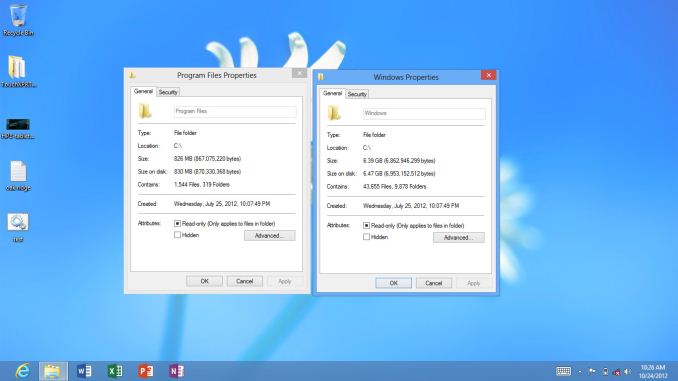
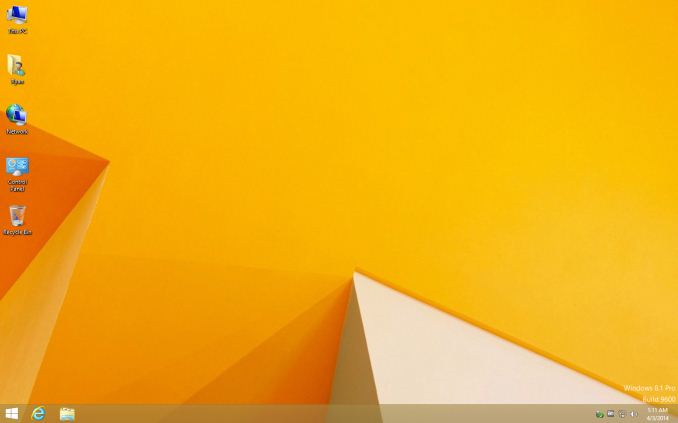
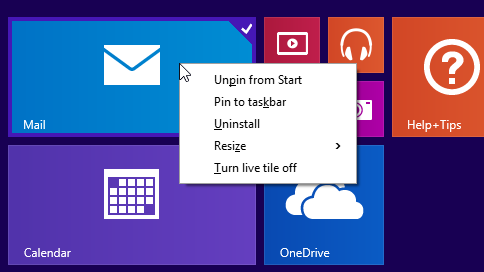
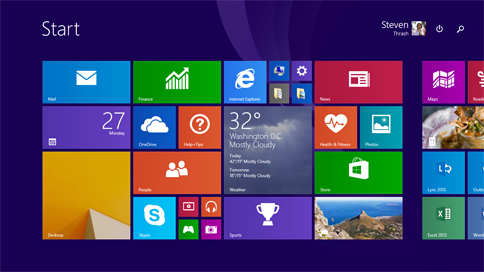
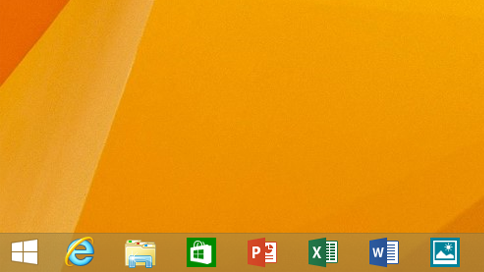
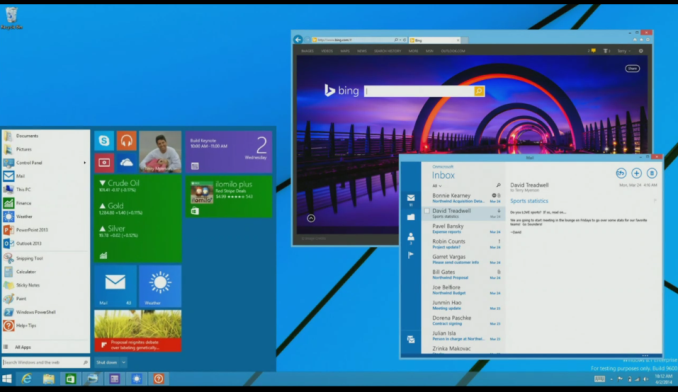

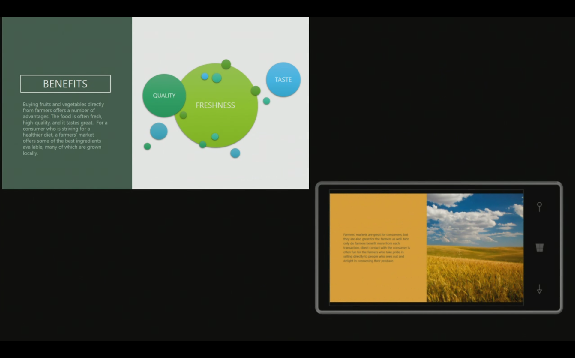








149 Comments
View All Comments
Wolfpup - Thursday, April 3, 2014 - link
Actually it does if explorer currently active program and all explorer windows are closed.I do think that was a bit confusing for people used to earlier OSes, and the tweak to this update makes sense, although it really wasn't any weirder than Windows 95 already was, it's just that we all knew where it was. (And technically it's still in the same place in 8 too, if you right click instead of left.)
frozentundra123456 - Thursday, April 3, 2014 - link
That happened to me too.akdj - Sunday, April 6, 2014 - link
Since 3.1---CTRL-ALT-Delete has always brought up your task manangement system! Come on, been around 30 years. You 'never' thought to rt click the 'start/modern/left corner, GottaHaveMyFreaking[Start]BarOrI'mLost Button....button? Man. I left 25 years using Windows after 14 months of frustration with Vista on a half dozen laptops we run our mobile audio/video company with. Have for thirty years in Alaska...fRom tape/analog to SD/SSD,HDD,CD,DVD,BluRay...and over the past five years, the astronomical launch of cloud services that are rewliable, affordable, efficient, cross platform...and DropBox is ubiquitous in our industry to collaborate on projects....uploading motion, audio or stills...Tokyo, LA, Beijing and counterparts all over western Europe have 'instant access!' Regardless time of day, day of week...if you TRULY had to google how to turn your 8.1 rig off, I'm with ya. Should stick with XP....I mean '7'akdj - Sunday, April 6, 2014 - link
Should've mentioned....we switched in 2006 to OSx, ALL of our rigs with the exception of our studio MacPros that held a partition with Win 7 for a few pieces of Adobe software unavailable on Mac (Audition was the BIG one). I've enjoyed every Mac I've purchased. They're incredibly reliable, phenomenal customer service and absolutely, 100% efficient ans dependable while performing in front of 8,500 people. When the '.1' update dropped for Win 8, I bought a pair of Ultrabooks, one a hybrid HP tablet/laptop with a core i5 processor, 8GB RAM & a 128GB SSD. The other, a Surface Pro II? ....bad ass little tablet. I'm able to do a few more 'things' productively on it when compared to our armada of iPads. Ballmer is out. HE WAS the problem. New managment, new visions, young-blood....and importantly, a new philosophy @ Windows moving forward....as they've seen with other brands and OS's, today's 'winner' is absolutely 100% compatible with your entire hardware group. Tablet. Phone. Laptop. Desktop. No broken RT/x86 differences. Its ok to have a different 'Metro' (modern) interface. Its FAR from 'hard to learn' and damn near as intuitive as ANY OS ever built! Seriously...other than iOS, I can't think of another 'new UI' OS I've seen that doesn't NEED an instruction manual. Watch an 8 minute youtube video and you'll have 95% of the interface (& the ability to change 'back' to your familiar 'Desktop' boot up....with a mouse, you'll miss nothing!) down pat. All it is...a bunch of live tiles updating themselves. Click desktop and BOOM....Guess where you end up? Right click the 'Start/Windows/LowerLeft' button and EVERY option plus MANY more present themselves...just like XP/NT/2000/7! Forget. Vista. It was a tragedy. Microsoft is...well, it's IN the name. They're a software company. If they focus on their software, work with OEMs to optimize their software....maybe continue building on the Surface/XBox platforms...but their past success has always been it's ubiquity the world over. First, the OS/UI itself. Office. Enterprise, server and large company support....many areas Apple has little interest in. We'll see the outcome over the next decade...but as we are more and more mobile, ultimately the company able to aggregate their OS across ALL daily use platforms (phone, tab, laptop, cloud storage and access) will win ...it's a marathon, not a sprint. As a 43 year old, I started with an AppleIIe playing Microsoft Flight Simulator in 1985. Got my first 286 in '89. 486 in '91/92 and continued building my own rigs for gaming, buying overpriced, underwhelming Compaq laptops....even spent the $400+ on Vista Ultimate with Bill's signature and the numbered black box. Man, what a devestating year that followed. 2006 was the switch year for us to OSx. I'll always own Macs moving forward...but I'm glad to be playing with Windows again. So many of the shitty reviews, complaints and BS ya read online will make the ignorant believe it's Vista 2 when the facts are 180° different. Its new, exciting and the way 8.1 manages RAM while manipulating D800 RAW files in Photoshop or rendering frames in AfterEffects...even on these new ULV Haswell chips is mind blowing. Snappy as hell, extremely stable....and I'm NEVER returning to the HDD. Solid State, PCIe storage.... And 8-10 second reboots, instantaneous app launching, fast transfers....down to $.50 cents a GB...I believe the next 18 months we'll see a precipitous drop in SSD pricing while capacities continue to rise. Front page of Anand right now is a review of a rebadged SSD set --- 128, 256, 512 & 1TB. Just over $500 for the TB SSD. THAT'S PROGRESS! As is memory managment, UI overhauls, high resolution graphic power AND the coding to deal with multiple monitors in HiDPI or assorted resolutions....that's my hope for 8.2??EdgeOfDetroit - Thursday, April 3, 2014 - link
Windows 2000 was a great OS in its day, and bucks the trend of "every other OS is good" from Microsoft.Wolfpup - Thursday, April 3, 2014 - link
That isn't an actual trend. Every other OS lately from Microsoft just gets a ridiculous negative meme to it that isn't fact based.hero4hire - Thursday, April 3, 2014 - link
First impressions. XP had problems but we're quickly forgiven because of how much of an improvement it was. Win7 had a rediculously long/ open beta and was polished. Had Vista been stalled until it was solid maybe we'd use "Vista sp2" and not 7. In hindsight maybe Vista pushed hardware so 7 could flourish as 8 may push touch so 9 will. But that is a different conversation and ignores the here and now.This update to 8 and by no longer treating the desktop like dos mode is what may get me to use my $15 upgrade.
Donkey2008 - Saturday, April 5, 2014 - link
Vista is one of the most under-appreciated OSes Microsoft has ever made. It did a LOT of the heavy pulling for Windows 7. The superfetch was a disaster (remember the hard drive chunking along when you first logged in?), the memory footprint was not optimized and Nvidia/ATI drivers were terrible (not MS's fault), but Vista did bring 64-bit to mainstream and once the before-mentioned superfetch was polished by SP2 Vista ran great.I get annoyed when nubs who know nothing about computers put Vista in the same sphere of "horrible" as ME or Win8. It was not a good OS for those running old hardware but if you had a decent system it ran fine.
akdj - Sunday, April 6, 2014 - link
While Vista indeed brought 64bit to the masses....and 'possibly' helped build '7' --- Even MS will tell ya, it was a mistake....a terrible, awful, incredibly over the top POS until the second service pack. Even then, MANY refused to loose XPExodite - Thursday, April 3, 2014 - link
While I appreciate that there's been some movement to please desktop users the reality is that W7 is still entirely superior from a user experience perspective.Until the time that's no longer the case the under-the-hood improvements of W8 and up are completely irrelevant to me.